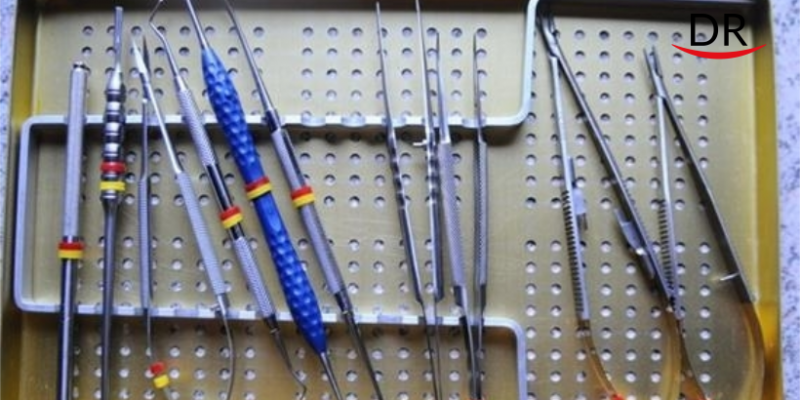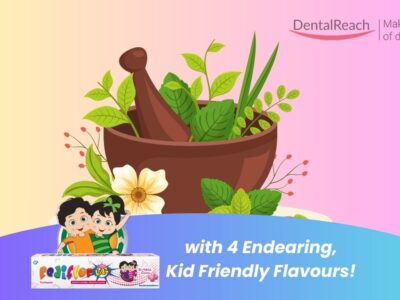One of the main objectives of advanced dentistry is to make the existing procedures as atraumatic as possible. For regular dedicated practitioners, dentistry has presented itself with certain critical problems and cases, classics being – how to carry out simple dental procedures in physically and mentally challenged patients or patients with special needs.
Over a period of time, dentistry has developed its course deriving both from the conventional and future perspectives of the profession and one such technique is termed as Atraumatic Restorative Technique(ART). This technique was founded by Dr. Joe Frencken in 1996 who introduced it with a purpose of making dentistry minimally invasive and less traumatic. It is based on removing decalcified tooth tissue using only hand instruments and restoring the cavity with an adhesive filling material.
Indications & contraindications –
The main indications of this technique can be classified under two broad categories which, for the purpose of understanding can be termed as –
- The patient requirement factors and
- The environmental factors.
The patient requirement factors include
- Uncooperative patients like paediatric patients who show an absolute fear towards the airotor and dental chair and refuse to obtain treatment by such means.
- Patients who are differently abled or who require special needs. For example, patients with autism and various other mental challenges become very uncooperative when subjected to the sound of airotor and machineries, in such cases invasion using hand instrument is preferred.
- Patients where caries have been formed on attrited teeth or are at a compromising position and using airotors would either expose the pulp or increase the sensitivity. Here, minimising of trauma becomes an inevitable part of the treatment plan.
The environmental factors includes
- The cessation of electricity,
- Inability and malfunctioning of the mechanical instruments,
- Clinical cases demanding no invasion or minimal invasion like pits and enamel caries.
ART has few contraindications. It is not advised to carry out this procedure in any cavity which is wide, deep and inaccessible.
Armamentarium –
The armamentarium of ART includes hand instruments which can be classified based on the classification given by G.V Black –
1. Exploring instruments– used in the confirmation of depth and invasion of the caries along with their existence which include
- mouth mirror
- straight probes
- shepherd’s hook or explorer of no. 21 and
- a periodontal probe.
2. Hand cutting instruments– which are primarily used for removal of weak and friable enamel, demineralised dentin, debris of the hard tissues, soft caries etc. This list includes instruments like
- enamel hatchet
- hoe
- spoon excavators of different sizes
- chisels of different sizes and
- gingival marginal trimmers.
3. Condensing instruments – The next set includes instruments used to carry the adhesive restorative material to the cavity to be filled. This includes –
- plastic filling instrument or cement carrying instrument
- burnishers and
- carvers
With amalgam falling into a least used category in the generation, carvers are rarely used to remove highpoints and excess of restorative cement.
In rare cases, matrix bands preferably T band or tofflemire matrix, is used to maintain the marginal integrity and contact area and point with the adjacent teeth.
The restorative materials used are
- Glass ionomer cement in maximum cases. In case the patient complains of a reaction or bio-incompatibility to the cement, the other alternatives are –
- Composites
- Polycarboxylate cements.
The glass ionomer cement provides an excellent matrix and serves as an anticariogenic agent with variable strength in the range of 150 MPA.
This discussion about armamentarium also derives two important principles of atraumatic restorative technique which are –
- Use of hand cutting instruments & being minimally invasive and
- Use of an adhesive cement.
Technique –
It is often noted that the queries about success of this technique always remain on the surface in the school of thoughts. Estimating success of a particular technique lies in the practical implementation of the technique. The implementation procedures are nothing but a serious of simple steps.
- To begin with, understanding the patient and diagnosis is the first process, it is rather a pre-treatment formality which is inevitable to ensure that this technique rightly deserves its seat in the treatment plan. A well enquired and perfectly analysed case history will automatically suggest the use of this technique in the treatment plan, followed by which a brief analysis of its reciprocation by the patient must be recorded.
- After determining the outline form and depth of the lesion under positive cases, only hand instruments are to be used in removal of caries, friable and weak hard tissues and other types of debris.
- Once the clearance is done, an absolute isolation has to be ensured. Saliva, water in the cavity would lead to increased setting time of the cement and ultimately increasing the creep, or time dependent deformity. The various techniques to ensure isolation include the use of rubber dams, dry cotton, a dry air syringe along with a saliva ejector etc.
- Once desired isolation is achieved, the intact margins have to be ensured and the restoration has to be done by respecting the anatomy of the cavity . The consistency of glass ionomer cement should be putty consistency or in the restorative form with a recognisable emission of glossy texture.
- The restoration should compulsorily follow smoothening, carving and reconstruction of the natural anatomy of the tooth with relief of all high points. The high points not only hamper the resistance and retention of the restoration but also act as a major cause of temperomandibular disorders and malocclusions in the permanent teeth.
- A small cotton pellet should be placed to ensure the retention of the restoration. Post-operative instructions include restriction in diet consumption of hard food and water for 30-45 minutes.
Limitations –
Apart from being an absolute perfect alternative for the mechanical restoration, ART is time consuming and effort oriented. It is a conventional technique to be used as an alternative to machine based advanced dentistry. Even though the chances of pulp exposure are minimal but cutting down to the exact cavity shape and size, preserving all its preparation features is challenging with hand cutting instruments and hence the retention and resistance features tend to get compromised in beginners.
Conclusion –
This restorative technique is one of the early techniques to be used for prevention for extension of the cavity. It is not only minimally invasive but to a larger extent it is atraumatic and that serves as an advantage in the patient circle but to practise this conventional art, a dentist is required to be skill oriented with an established practise from grass root level.




















Comments